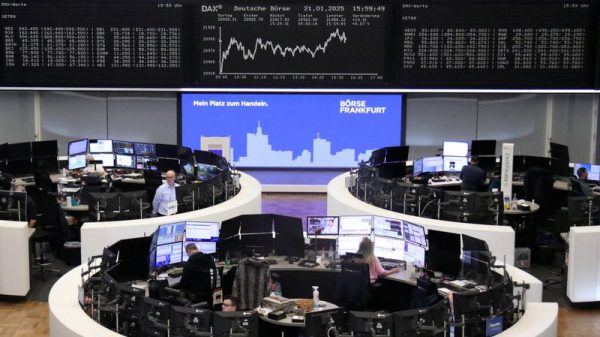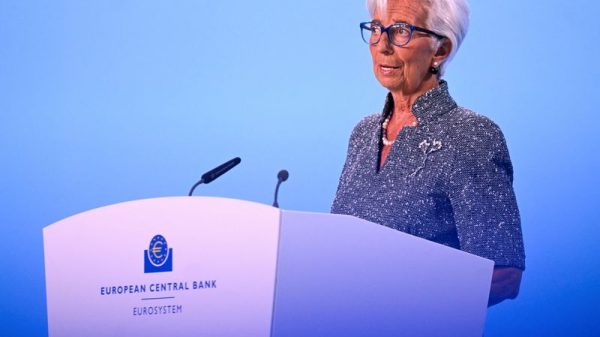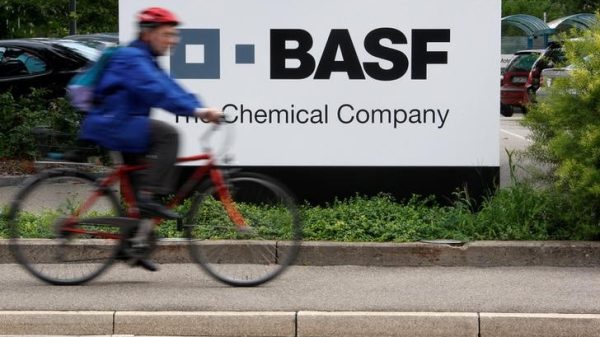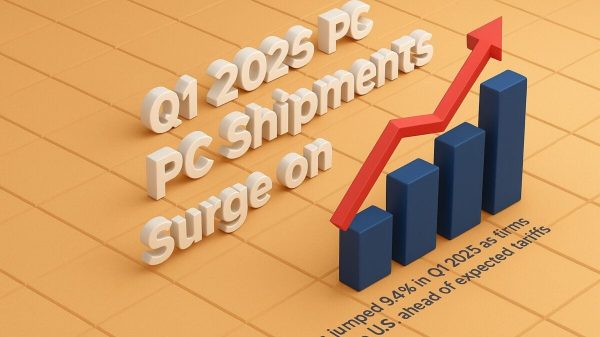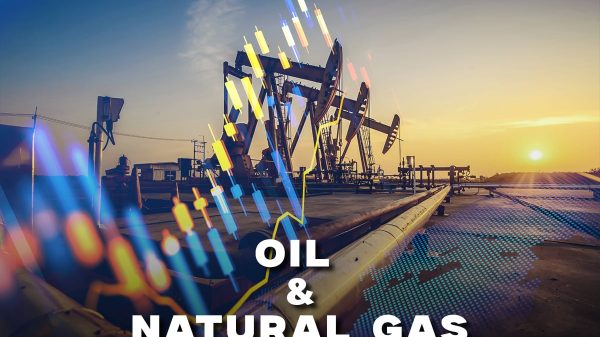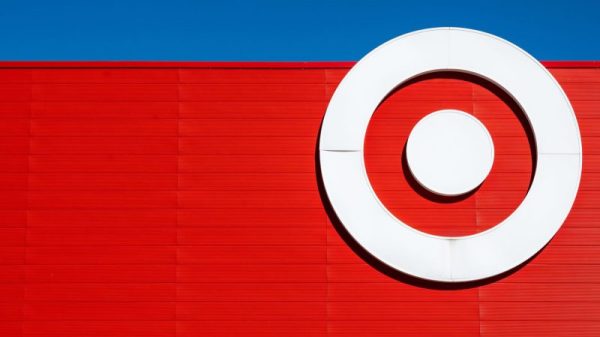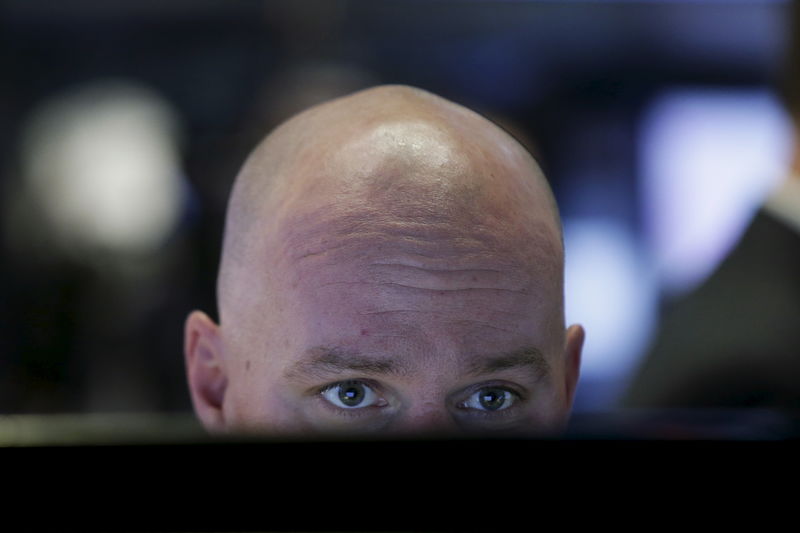Ardmore Shipping Corporation (NYSE: NYSE:ASC) delivered strong financial results in its third quarter of 2024, with adjusted earnings of $23.3 million, or $0.55 per share. The company’s time charter equivalent (TCE) rates stood at $28,500 per day for medium-range tankers (MRs) and $21,600 per day for chemical tankers.
Ardmore also announced a quarterly dividend of $0.18 per share and reported the lowest cash breakeven in its history at $11,500 per day. The company’s leadership remains optimistic about the market outlook, citing seasonal factors and geopolitical influences, despite recognizing potential short-term volatility.
Key Takeaways
Ardmore Shipping’s adjusted earnings for Q3 2024: $23.3 million, or $0.55 per share.
TCE rates: $28,500 per day for MRs, $21,600 per day for chemical tankers.
Quarterly dividend declared: $0.18 per share.
Cash breakeven reduced to $11,500 per day.
Market outlook remains positive due to refinery activity and geopolitical factors.
Company focuses on balancing shareholder returns with fleet investments and operational performance.
Company Outlook
Ardmore Shipping enters the winter market with a supportive outlook, driven by refinery activity and geopolitical factors.
The aging MR fleet indicates a significant replacement need, which Ardmore is positioned to capitalize on.
The company aims to maintain operational excellence with over 99% on-hire availability.
Bearish Highlights
The company acknowledges short-term market volatility as a potential challenge.
Bullish Highlights
Strong financial performance with a notable annual increase in earnings and free cash flow.
Improved chartering performance and robust long-term market fundamentals.
Rising demand for transition fuels and an aging tanker fleet present opportunities for growth.
Misses
There were no specific misses discussed in the earnings call.
Q&A Highlights
CEO Gernot Ruppelt addressed the stability of market fundamentals amidst U.S. political changes and European sanctions on Russian refined products.
The company is cautiously approaching asset acquisitions, focusing on shareholder value and disciplined investment decisions.
Ardmore is actively buying back $10 million of its $40 million preferred equity as part of debt reduction, with the ability to redeem the remaining amount at its discretion.
Ardmore Shipping’s third-quarter earnings underscore the company’s robust financial health and strategic positioning in the tanker market. The company’s focus on optimizing trading performance and managing costs has led to a strong balance sheet and successful capital allocation. Ardmore’s capital allocation strategy includes reinvestment in the fleet and a cautious approach to asset acquisitions, ensuring long-term shareholder value.
The company’s buyback of preferred equity is also a strategic move to reduce debt and improve financial flexibility. With a positive market outlook and a disciplined investment approach, Ardmore Shipping continues to navigate the dynamic maritime industry effectively.
InvestingPro Insights
Ardmore Shipping Corporation’s strong financial results in Q3 2024 are reflected in the company’s attractive valuation metrics and financial health indicators from InvestingPro. The company’s P/E ratio of 3.73 suggests that the stock is trading at a low earnings multiple, which aligns with one of the InvestingPro Tips. This valuation could be particularly appealing given the company’s robust earnings report and positive outlook.
The company’s dividend yield of 11.06% as of the latest data underscores Ardmore’s commitment to returning value to shareholders, which was highlighted in the earnings report with the declared quarterly dividend of $0.18 per share. This high yield is consistent with the InvestingPro Tip that the company “pays a significant dividend to shareholders.”
Additionally, Ardmore’s strong operational performance is mirrored in its financial metrics. The company’s operating income margin of 35.13% for the last twelve months ending Q2 2024 demonstrates its efficiency in managing costs and generating profits, which supports the management’s claim of achieving the lowest cash breakeven in its history.
It’s worth noting that while the stock has experienced a significant price decline over the last three months, with a total return of -28.72%, this could present a buying opportunity for investors who believe in the company’s long-term prospects. This is particularly relevant given the InvestingPro Tip suggesting that the stock may be in oversold territory based on its RSI.
For investors seeking a more comprehensive analysis, InvestingPro offers 12 additional tips for Ardmore Shipping Corporation, providing a deeper insight into the company’s financial health and market position.
Full transcript – Ardmore Shpng (ASC) Q3 2024:
Operator: Good morning ladies and gentlemen and welcome to Ardmore Shipping’s Third Quarter 2024 Earnings Conference Call. Today’s call is being recorded and an audio webcast and presentation are available in the Investor Relations section of the company’s website, ardmoreshipping.com. We will conduct a question-and-answer session after the opening remarks. Instructions will follow at that time. A replay of the conference call will be accessible anytime during the next two weeks by dialing 1-888-660-6345 or 1-646-517-4150 and entering the passcode 17491. At this time, I will turn the call over to Gernot Ruppelt, Chief Executive Officer of Ardmore Shipping.
Gernot Ruppelt: Good morning and welcome to Ardmore Shipping’s third quarter 2024 earnings call. First, let me ask our President and CFO, Bart Kelleher to discuss forward-looking statements.
Bart Kelleher: Thanks Gernot. Turning to Slide 2, please allow me to remind you that our discussion today contains forward-looking statements. Actual results may differ materially from those projected in the forward-looking statements. Additional information concerning factors that could cause the actual results to differ materially from those in the forward-looking statements is contained in the third quarter 2024 earnings release, which is available on our website. And now I’ll turn the call back over to Gernot.
Gernot Ruppelt: Thank you, Bart. Let me first outline the format of today’s call. to begin with, I will discuss our third quarter earnings highlights. Following this, I will discuss the near term market outlook and our capital allocation policy. After that, Bart will provide an update on product and chemical tanker fundamentals and our financial performance. And then, I will conclude the presentation before opening up the call for questions. So, turning first to Slide 4, to discuss our third quarter earnings highlights. We’re pleased to announce strong third quarter results with adjusted earnings of $23.3 million or $0.55 per share, reflecting elevated TCE rates versus historical norms. Our MRs earned $28,500 per day for the third quarter and 25,000 per day so far in the fourth quarter with 50% booked. Our chemical tankers earned $21,600 per day for the third quarter and $25,150 per day for the fourth quarter with 55% booked so far. The chart on the upper right, highlights our strong market performance with TCE rates up year-on-year during the seasonally slower third quarter. Additionally, on a year-to-date basis, we are up 17% compared to the same period last year. In tandem with our strong MR performance, we continue leveraging the significant overlap between product and chemical tanker trades. Meanwhile, we continue to execute on our long standing capital allocation policy. We declared another quarterly cash dividends of $0.18 per share consistent with our policy of paying out one-third of adjusted earnings. Furthermore, we continue to make high return investments in our fleet, which are enhancing performance and reducing emissions. To give an example, as our chemical tankers go through their regular five year dry docking cycle in 2025, we have committed to investing in specialized tank coatings to further increase trading flexibility and boost earnings performance. Overall, Ardmore continues to benefit from a strategic focus on optimizing our trading performance while tightly managing cost. We have reduced our breakeven level down to $11,500 per day, the lowest in Ardmore’s history. This provides flexibility and resilience to our company. Turning to Slide 5, where we discuss why the market outlook continues to be very supportive. As you can see from the graph on the upper right, we are approaching a point of inflection as we enter the seasonally stronger winter market. This typically commences in November, driven by increasing refinery runs, the impact of weather delays and heightened overall trading activity. TCE rates in the third quarter were impacted by an unusual spike in the number of VLCCs and Suezmaxes carrying refined product as a result of temporarily weaker crude markets. Although, crude tank and new buildings often carry these refined products on their maiden voyage, it is uncommon for ships to “clean up”. This is due to the significant switching cost and time involved. However, we have seen this trend unwinding as crude markets have also strengthened. In addition, ongoing and persistent geopolitical disruption continues to drive higher ton miles and the dislocation of core trades, which is adding consistent upward pressure to freight rates. Underlying demand drivers remain supportive despite some short term volatility. Saudi Arabia and OPEC-plus are expected to increase production into 2025, while the U.S. economy continues to prove resilient with strong jobs growth and falling inflation. Moving to Slide 6, where we highlight our long standing capital allocation policy. Given our strong financial position, we have been actively delivering on all of our capital allocation priorities and are pleased with our performance to date. I would like to draw your attention especially to the following. We have declared our eighth consecutive dividend with a cumulative payout equivalent to 15% of our market cap, in line with our energy transition plan. We have completed numerous projects across the fleet achieving high IRRs up to and even exceeding 100%. In this high interest rate environment, we continue to delever across debt and preferred stock and we have reduced our cash breakeven from $16,500 per day to $11,500 per day leading to annualized savings of about $50 million. Our capital allocation cycle reflects the strategic long term approach through the cycle. We are committed to balancing the return of cash to shareholders with reinvesting in our fleet in order to enable sustainable value creation. And with that I would like to hand over to Bart.
Bart Kelleher: Thanks Gernot. Following Gernot’s insights on the market outlook, we examine the industry fundamentals in greater detail. As previously discussed, the supply demand dynamics continue to be very supportive. Moving to Slide 8, where we contrast an aging MR fleet and its replacement needs with the current order book. The chart on the left, provides an important visual representation of the changes in the MR fleet over time. As previously discussed, 15 years ago, we observed a modern fleet with a large order book as highlighted in the red quadrant. However, over time, the order book has declined while the fleet has aged. Currently, as highlighted in the green quadrant, we have an exceptionally old fleet in an order book that reflects this replacement need. In fact, it’s the oldest fleet in two decades with an average age of nearly 14 years. Now moving to the chart on the right, we can see that 50% of the global MR fleet will be over 20 years old and entering the scrapping window within the next five years. In contrast, the current order book delivering over the same time period represents only 15% of the fleet, so the aging fleet is more than 3 times the current order book. For the product tanker order book, overall, it’s important to reemphasize the lack of Aframax crude tanker new buildings as well as the fact that LR2s are coated tankers of the same size and can operate in the same trades. That means that as the Aframax fleet shrinks, a portion of these LR2s will operate in crude trades to make up the shortfall. Moving to Slide 9, where we address the long term demand drivers in greater detail. The chart on the top right, highlights the enduring trend of oil refinery and petrochemical production capacity expansion in the East. Combined with closures in the West, this continues to drive incremental long haul ton miles. At the same time, we note the evolving demand picture with the growing importance of biofuels, while market projections reflect the increasing demand for oil products to meet both global energy and mobility needs. As previously mentioned, the ongoing conflict between Russia and Ukraine coupled with the EU embargo on refined products has resulted in a persistent reordering of the global product trades. Also, new regulations provide further upside potential to the market due to increasing trade complexity, which creates opportunities for operators such as Ardmore. Moving to Slide 10, which highlights the supportive fundamentals considering the aging fleet and continued demand drivers we just discussed in the chart, the green bars represent ton mile growth, while the blue and gray bars represent net chemical and product tanker fleet growth. Of course, it’s important to remember the need to adjust for the dynamics between LR2s and Aframax crude tankers as we just discussed. Looking ahead, in a range of scenarios over the next several years, market fundamentals point to sustained strength. Moving to Slide 12 and turning our attention to the company, Ardmore continues to build upon its financial strength. Once again, the chart on the bottom left, highlights our tremendous focus on significantly reducing our cash breakeven levels to $11,500 per day. This has been achieved in an elevated interest rate environment driven by effective cost control, lower debt levels and access to revolving credit facilities. As always, Ardmore remains focused on optimizing performance, closely managing costs and preserving a strong balance sheet. Turning to Slide 13 for financial highlights. As noted, we are very pleased with our performance as we report results of $0.55 per share for the third quarter. We are correspondingly reporting strong EBITDAR for the quarter and continue to frame EBITDAR as an important comparable valuation metric against our IFRS reporting peers. While I won’t go into the details here, there is a full reconciliation of this presented in the appendix on Slide 24. Also, please refer to Slide 25 in the appendix for our fourth quarter guidance numbers. Moving to Slide 14 for Fleet Operations. We have now completed all of our scheduled dry dockings for 2024. We have our full fleet in position as the winter market begins to accelerate. Notably, we made $15 million of investments in efficiency enhancing technologies and scrubber installations this year, which represents over half of our $26 million CapEx program. This is already boosting our strong chartering performance. For 2025. We’re forecasting capital expenditure of approximately $30 million to $35 million covering routine dry dockings as well as significant investments in additional high returning performance upgrades. This includes the previously mentioned specialized tank coatings. In addition, we’ve been preparing for the implementation of fuel EU maritime, which comes into effect on January 1, 2025. While a lot of planning is going into this by our chartering and operations team, in essence this is a pass through voyage expense and will be treated as such. Finally, Ardmore continues to deliver strong operational performance, achieving over 99% on hire availability in the third quarter with strong coordination and execution between our Seafarers and shoreside teams. Moving to Slide 15, where we highlight the power of our strong operating leverage. As seasonality plays out, we can experience significant increases in charter rates. To frame this in a simple manner, an additional $10,000 per day equates to an annual increase of about $2.25 in earnings and a boost of nearly $100 million in free cash flow generation. As we enter the seasonally stronger winter market, our modern high quality fleet is well positioned to take full advantage. With that, I’m happy to hand the call back to Gernot and look forward to answering any questions at the end.
Gernot Ruppelt: Great, thank you Bart. To summarize then, first the market. Our chartering performance remained elevated in the typically slower third quarter and is up year-on-year. Now as we move into the seasonally stronger winter market, rates have begun to accelerate. While we recognize some short term volatility, long term market fundamentals remain strong. This strength is supported by an unprecedented age demographic for the tanker fleet on one hand and an evolving and growing demand picture on the other hand, including an increasing need for transition fuels. Regarding our company, our investment in the fleet is enabling us to maximize TCE performance. Meanwhile, tight cost management and continued delevering are reducing our cash breakeven. Overall, this enables us to deliver consistently strong earnings. The result is a robust balance sheet and we have been delivering on all our capital allocation priorities. And with that I would now like to open the call for questions.
Operator: [Operator Instructions] And our first question comes from the line of Omar Nokta from Jefferies. Your line is now open. Please go ahead.
Omar Nokta: Hi, Gernot and Bart, good afternoon. Obviously, you guys are reporting, obviously on a day that’s pretty significant and I guess, sorry to ask this from the get go, but just in general, anything that — anything immediately or on the horizon that you see changing for the product market as a result of the Trump win? Yes, sorry to ask that off the bat here.
Gernot Ruppelt: No, no, not a problem at all, Omar. And good morning to you and I hope you also appreciate that we’ll probably defer for any kind of deep political analysis and leave that to those most qualified to give it. Of course, we do pay attention and the U.S. is important for us, customers and staff and of course shareholders there. But as far as the market is concerned, we think, for the reasons that we discussed, fundamentals remain very positive and aren’t really affected by the U.S. Presidency. I mean, certainly on the supply side that’s not going to change. Not the supply picture, not the age demographic of the fleet, but also those kind of big sectoral drivers, refinery dislocation, east, west flows, that has really nothing to do with kind of the U.S. political landscape. The embargo on Russian refined product exports. That’s an EU embargo, that’s a European thing. And even if there were a resolution to the conflict between Russia and Ukraine, I would question whether Europe would go back to depending to — depending on Russian diesel exports. To the extent, they have before, considering there’s a really well functioning, a well-priced and lively alternative trade that’s been well underway now for a long period of time, situation in the Red Sea, I doubt there’s going to be an immediate resolution. And for ships to safely go through the Red Sea again, I think a lot would have to happen. I would just make one more observation. In general, I think any incoming President, regardless of which party, has no interest in seeing prices at the pump go up. And that typically would suggest that that President has no interest in restricting circulation of oil products. As a matter of fact, it should mean more refinery output and with that usually more trading activity and a higher need for transport.
Omar Nokta: Thank you. That’s very helpful. Appreciate your views there. And maybe just wanted to ask also, clearly just looking at your bookings that you’ve been able to achieve here thus far into the fourth quarter on both the MRs and Handy Chemicals, I’d say, they’re pretty solid and seem to be above the averages maybe that we kind of see with the spot market indices. I guess, the question is, is that the case? Is that above the indexes and two in relation to where the market is now? How would you say that compared to your averages thus far?
Gernot Ruppelt: Yes. Thank you, Omar. And I guess, I’ve been told I’m not very good at taking a compliment, but we’ll just take it. So appreciate it. But it’s really more testament to, I think the team and the platform that we built where I think index indices just tend to, imperfectly reflect the true potential of the market. And we have of course, a very integrated platform and culture that is focused on one thing and one thing only, which is maximizing TCE performance. And a lot of the capital investments that we are so excited about on top of that help us to of course increase energy efficiency, get access to, premium, premium trades and premium cargoes. And I would say that is an important component to our strategy and it’s good to see that play out. So thank you.
Omar Nokta: Okay, very good. Well, thank you. That’s it from me.
Operator: [Operator Instructions] And the next question comes from the line of Ben Nolan from Stifel. Your line is now open. Please go ahead.
Ben Nolan: Thank you. Good morning or good afternoon, guys. I wanted to ask a little bit or maybe how you think about asset pricing specifically, you’ve spent a few years now really deleveraging the balance sheet, which is great. And perhaps at least lately, part of that has been maybe a little hesitancy to lean in very far into buying assets because they are perhaps a bit elevated. And I’m not asking for like a perfect number of what you think is a good price on MR, but maybe just a little of the background or the calculus or whatever behind where you think or how you would think about what is a good price, given the supply, demand dynamics new buildings etc.? And how close are we to something that you think is actionable?
Gernot Ruppelt: Yes. Good morning, Ben. It’s a great question. And it’s part of that, I think, nuanced very thoughtful and deliberate balancing act we undertake on a continuous basis among management and with the board taking it back to the capital allocation policy that we’ve been very consistent with. You know, reinvestment in the business is a big part of it. And when we look at the different angles of reinvesting in the business, we have to then look at what do we believe offers the most value to our shareholders. And we are very excited about finding ways to reinvest in the existing fleet in ways that provide extremely attractive returns regardless of what happens in the market. While, of course, at the same time, we do stay connected with a broad range of sources of deal flow, really, to make sure that we continue to evaluate all potential avenues for reinvestment. And here we, I think we will continue to be disciplined and selective and make sure that any investment decision meets our value criteria.
Ben Nolan: Okay. And any thoughts as to sort of a snapshot of where we are today? Where you think asset values are in line with that framework?
Gernot Ruppelt: Where we are today? Well, I think it’s an interesting point in time, where certainly, we have pointed to some of that short term volatility. And I think that’s something we pay very close attention to as it kind of reverberates through the different markets that we’re exposed to, including, of course, the sale and purchase markets.
Ben Nolan: Okay. All right, thank you very much.
Gernot Ruppelt: Thanks, Ben.
Operator: Thank you. And no further questions that came through. This concludes our conference for today. Oh, sorry. We have a follow up question from Omar Nokta from Jefferies. Please go ahead.
Omar Nokta: Thank you. Thanks. Just one quick follow-up. Just from my side, just wanted to ask about the preferreds. You’re buying back 10 million of the 40. Just wanted to get your thoughts on that? When you think of buying say, stock versus these preferreds, is it more attractive to you at these levels to look at the stock or is it preferred still you think where you’d rather look to buyback a part of the capital structure?
Bart Kelleher: Yes, thanks Omar. a good question. And I think the way that we think about it, really well labeled preferred equity, the preferred and our debt kind of think about very similar instruments and paying 8.5% interest on the preferred on a fixed basis in a decreasing interest rate environment is one where we can chip away at that and further reduce our break even. And there’s an efficiency to in the lower interest rate environment and having a revolving capacity utilize some of the bank debt in the short term to do that. But I think, you can really think about it as our approach to debt reduction is really debt reduction and the preferred as part of that bucket.
Omar Nokta: Okay, thanks Bart. And then just quickly on that. Is there, you’re redeeming, say 25% of the outstanding amount. Is there any restrictions that would stop you from being able to do the full remaining 30?
Bart Kelleher: No. Good point. So we can redeem.
Gernot Ruppelt: I’ll pass it on. Oh, go ahead, Omar. Sorry.
Bart Kelleher: We can redeem any amount at this point, at any point in time. And I think we just felt it was prudent to start taking a bite out of it. And then we’ll assess, how we see the market develop and the cash flow generation from the company and look to continue to delever including our position in the preferred.
Omar Nokta: Very good. Thank you, again.
Bart Kelleher: Thanks.
Operator: Thank you. This concludes our conference call for today. Thank you all for participating. You may now disconnect.
This article was generated with the support of AI and reviewed by an editor. For more information see our T&C.




